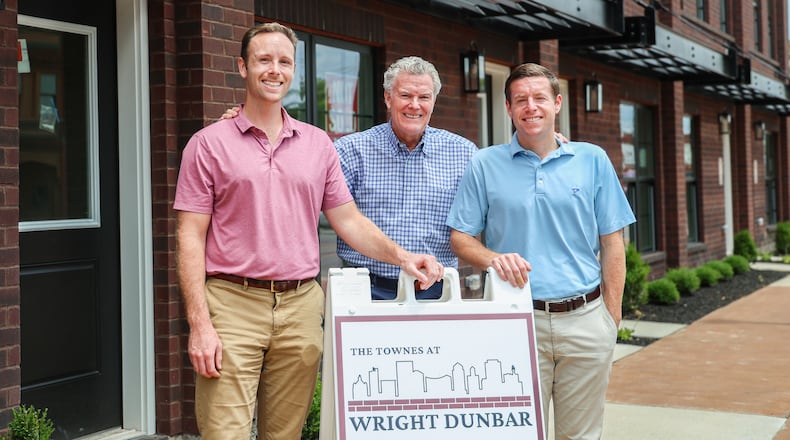“They’re running it on their own,” Charles Simms said.
It’s the newest chapter in a multi-generation family story that started in 1957, when Charles V. Simms, Charles’ father, started Charles V. Simms Development. (The story goes even further back, actually. Charles Simms’ great-grandfather, banker Charles Harry Simms, sold what was the Dayton Evening News to a young James Cox in 1898. Cox changed his acquisition’s name to the Dayton Daily News.)
“I’m just really proud to do my part in helping to continue that legacy, that family legacy,” said Charles, 65, who bought the development company in 1996. His father is 93 years old today.
Credit: Bryant Billing
Credit: Bryant Billing
Simms, while president of Simms Development, was probably best known for breaking urban residential ground, literally, building his first downtown homes in 2010, while the economy was mired in what was called the Great Recession —which mostly manifested as a real estate depression.
He invested in downtown housing well before it was an obvious trend. His first downtown project, Patterson Square, was a success. So was his next project.
If you’ve been been to downtown Dayton, you’ve seen Simms’ work. In a 2019 interview with the Dayton Daily News, he estimated that he had then built 1,000 to 1,500 homes region-wide. Today, the number is closer to 4,000 units.
He recalled a 2008 phone call from Walt Hibner, who was executive director of the Dayton homebuilders association, asking him to consider building downtown.
“I pretty much laughed it off. I thought I would never build downtown,” he told the newspaper in 2019.
But Dayton city government gave him land and a grant to help with environmental clean-up, and Simms moved ahead.
Between 2016 and 2020, more than 575 new apartments opened downtown and more were on the way. The Simms family business, as of early 2020, had built 117 townhomes downtown since 2010.
His family’s latest downtown investments: The Townes at Wright-Dunbar, on the city’s West side, offering 26 units. In all, the company has built more than 140 downtown units.
Credit: Bryant Billing
Credit: Bryant Billing
“People weren’t confident it (downtown) was safe,” Simms recalled of the landscape before his downtown work. “When the city of Dayton convinced me to start that first community next to the Dragons stadium (Day Air Credit Union Ballpark), it sold so well. People realized it was safe to come downtown and actually live in downtown.”
Charles Simms remains involves with Simms Management, which focuses on management of apartments. Sons Robi and Crosby Simms have the helm of Simms Development.
Wright Dunbar is a unique neighborhood with continued potential, Robi Simms said. The first residents at the Townes — the first market-rate housing on the West side in 40 years — are expected near the end of July.
The Salem Avenue area also offers opportunities, he said.
“We’re also looking for more ground in the area, as well, for either more single-family or more attached, market-rate homes,” Robi said.
Crosby Simms said the “reactivation” of the river area near the Wolf Creek neighborhood, with the building of new homes, sidewalks and stairs in that area, may yield its own opportunities.
“It’s an historic neighborhood, and I think it’s just time that it returns to its glory,” Crosby said. “There have been people who have lived there, who have had beautiful houses for decades.”
About the Author



